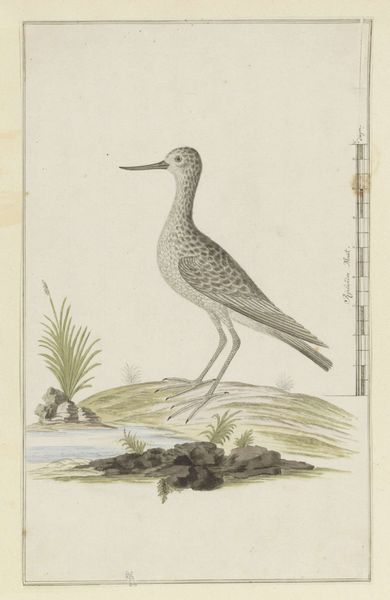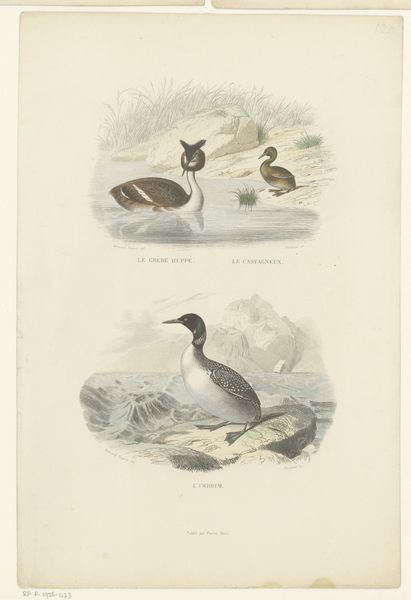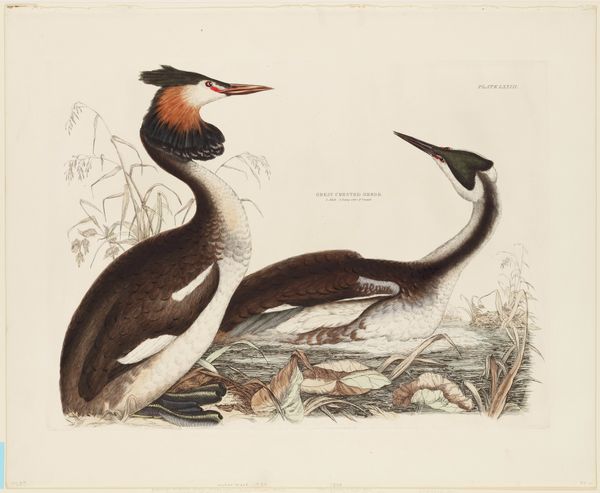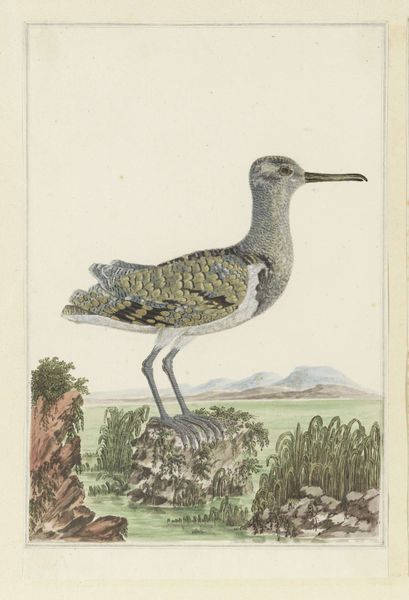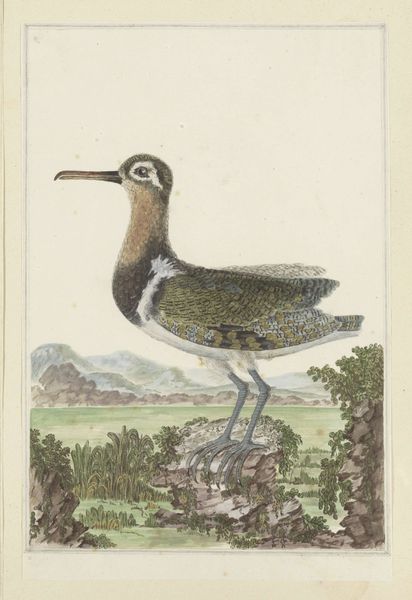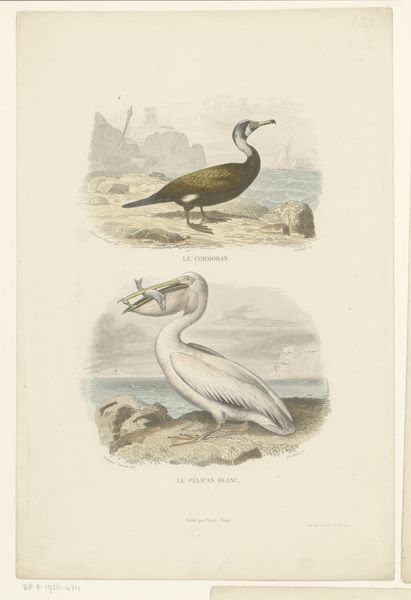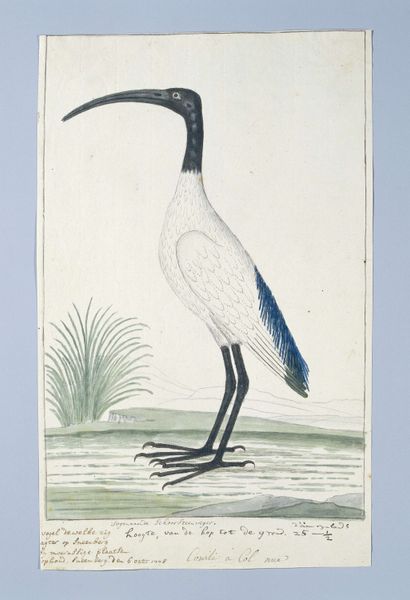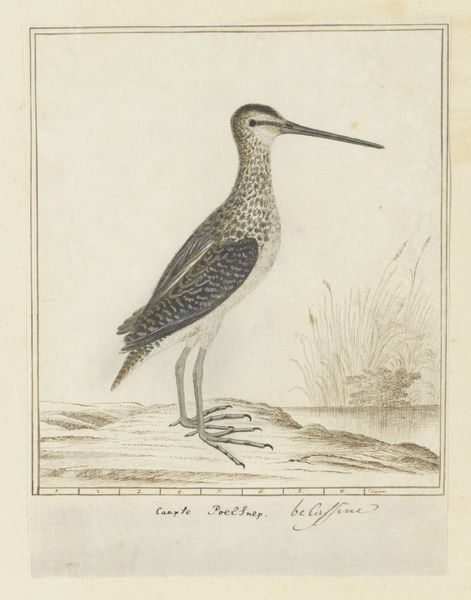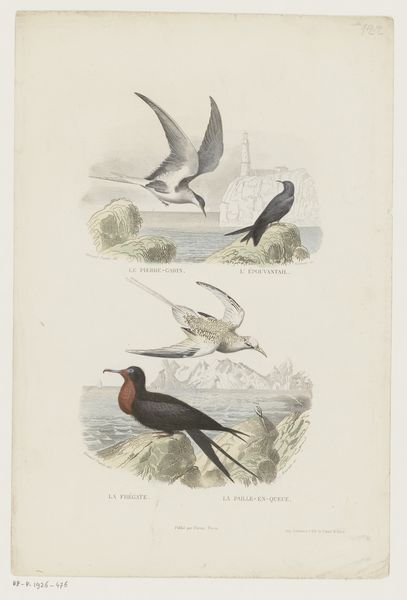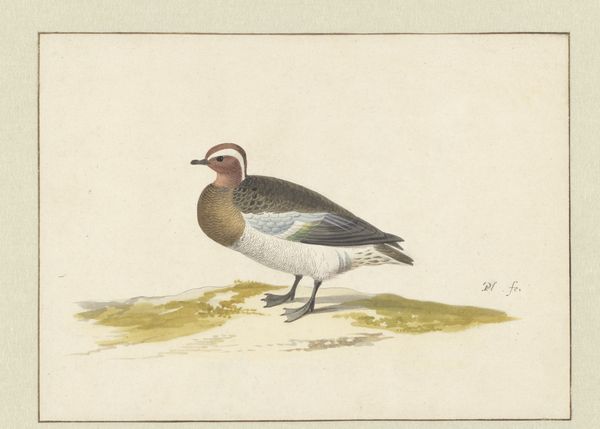
color-lithograph, print, watercolor
#
color-lithograph
# print
#
impressionism
#
landscape
#
caricature
#
watercolor
#
surrealism
#
watercolour illustration
#
watercolor
#
realism
Dimensions: 8 7/8 x 12 3/8 in. (22.54 x 31.43 cm) (image)10 1/8 x 15 3/8 in. (25.72 x 39.05 cm) (sheet)
Copyright: Public Domain
Editor: This is "Loon," a color lithograph print with watercolor by Theodore Jasper, circa 1881, currently held at the Minneapolis Institute of Art. The print is striking; it's both scientifically illustrative and possesses this strangely serene quality. What immediately grabs my attention is the deliberate use of lithography alongside watercolor; what do you see in the relationship between the processes, particularly the lithographic process and how that contributes to its meaning or context? Curator: I'm drawn to the materials and methods as well. Lithography in the late 19th century allowed for the relatively mass production of images like this, connecting art to a wider audience beyond traditional patrons. And the added watercolor transforms the image into something "precious" to give it unique market value. It suggests a negotiation between artistic expression and industrial reproducibility. Think about who this print would have been created and consumed by. Were these materials readily available or were some imported, requiring specialized skill, training or financial capital? Editor: That’s fascinating. The industrial element of printmaking democratizing art, but the addition of hand-painted watercolor adding uniqueness, as well as potentially adding a "touch of class" to target affluent buyers. It does make me wonder about Jasper’s studio practice and whether he applied all the watercolor himself. The addition of color seems critical to the popular appeal of the image at that time. Curator: Exactly! And consider the cultural context surrounding representations of nature at the time. With growing industrialization and urbanization, prints like these might offer a sense of nostalgia for the rural landscape. The detailed rendering, enabled by the lithographic process, also speaks to scientific advancements. How might this reflect larger shifts in labor practices and even resource extraction of natural habitats during this period? Editor: So it’s not just an innocent depiction of birds; the very production and reception of this piece reflect complex economic and social forces. I’ve never considered nature prints in light of production, labor and consumption of material. I will think of this image and these aspects next time!
Comments
No comments
Be the first to comment and join the conversation on the ultimate creative platform.

